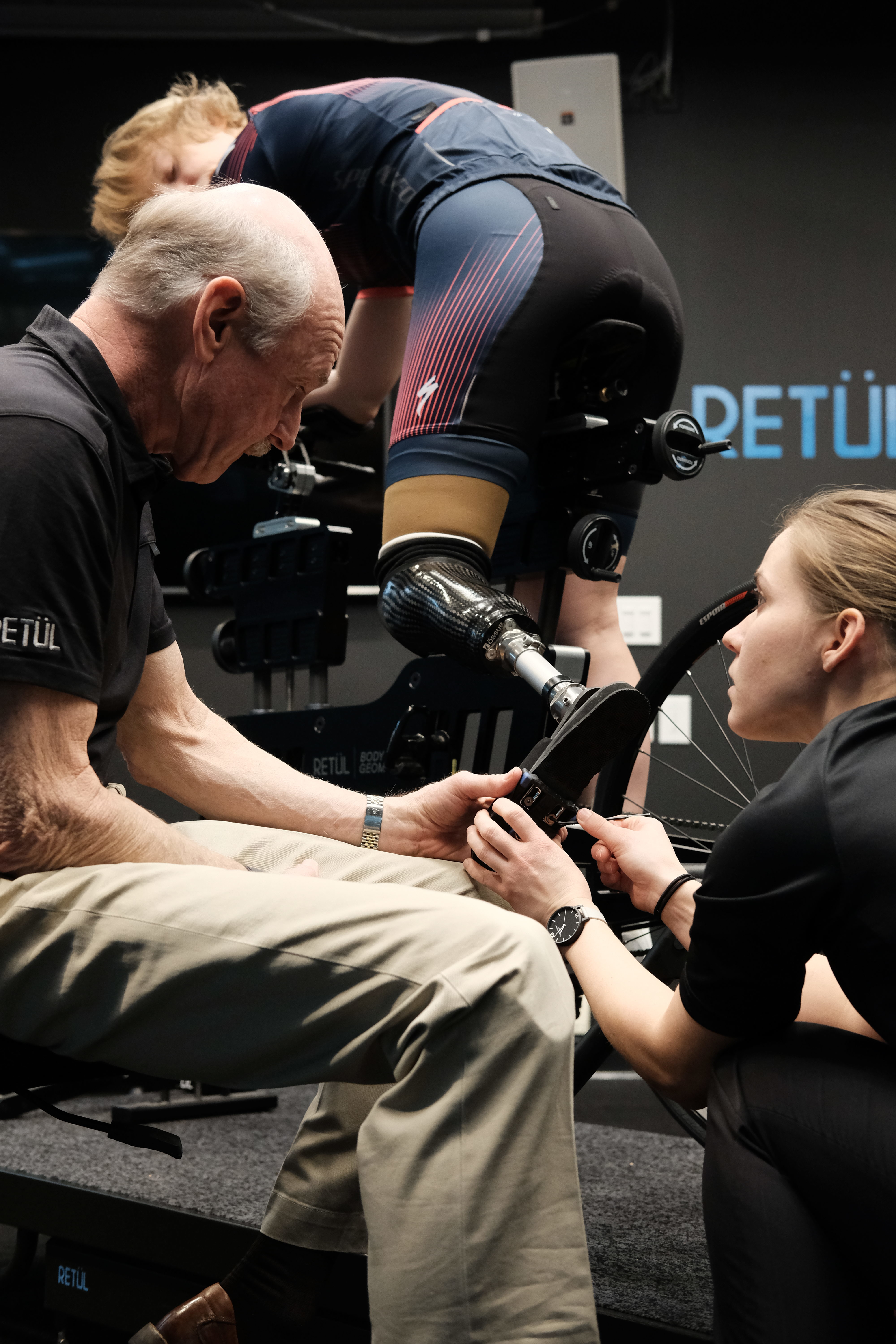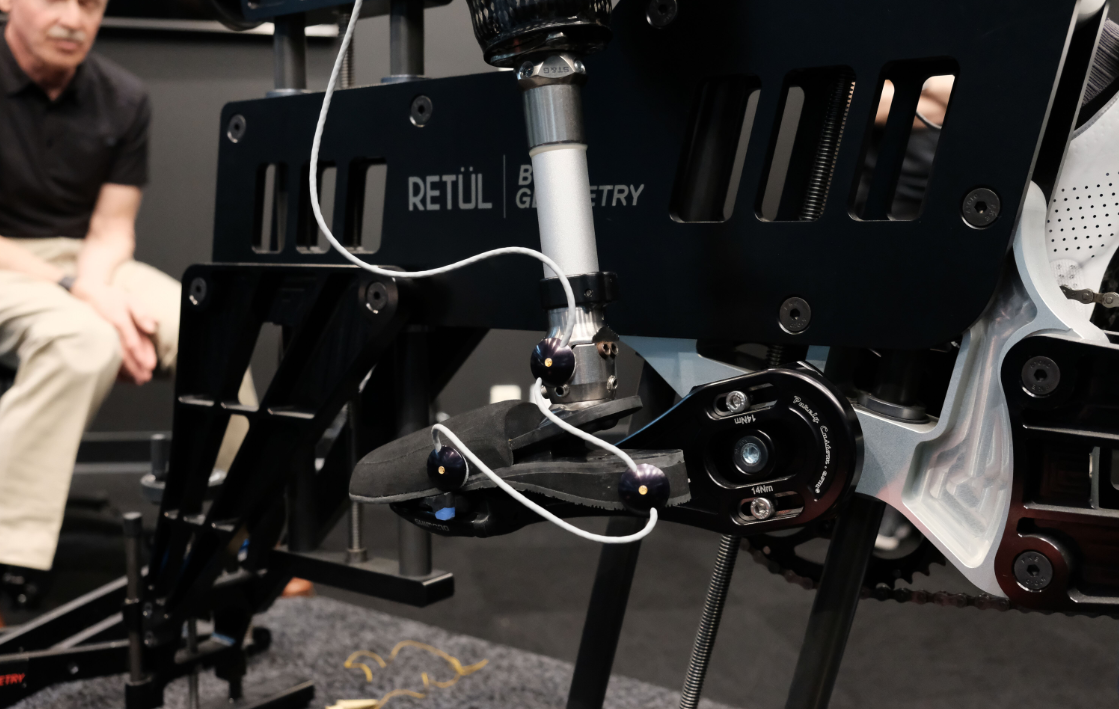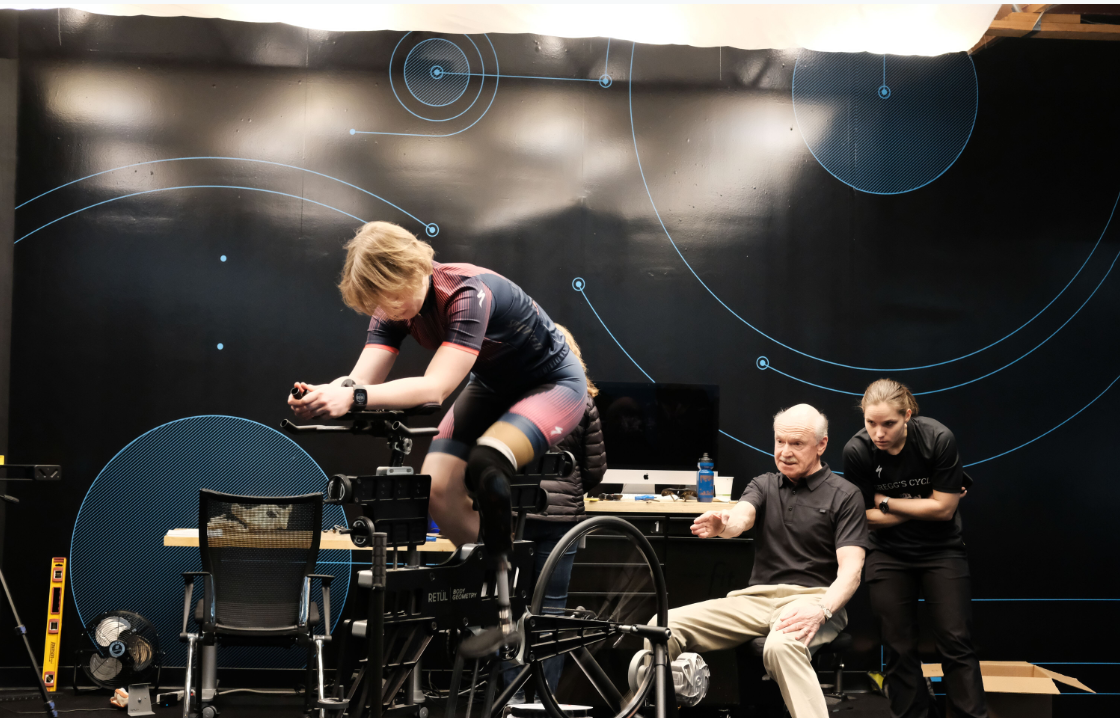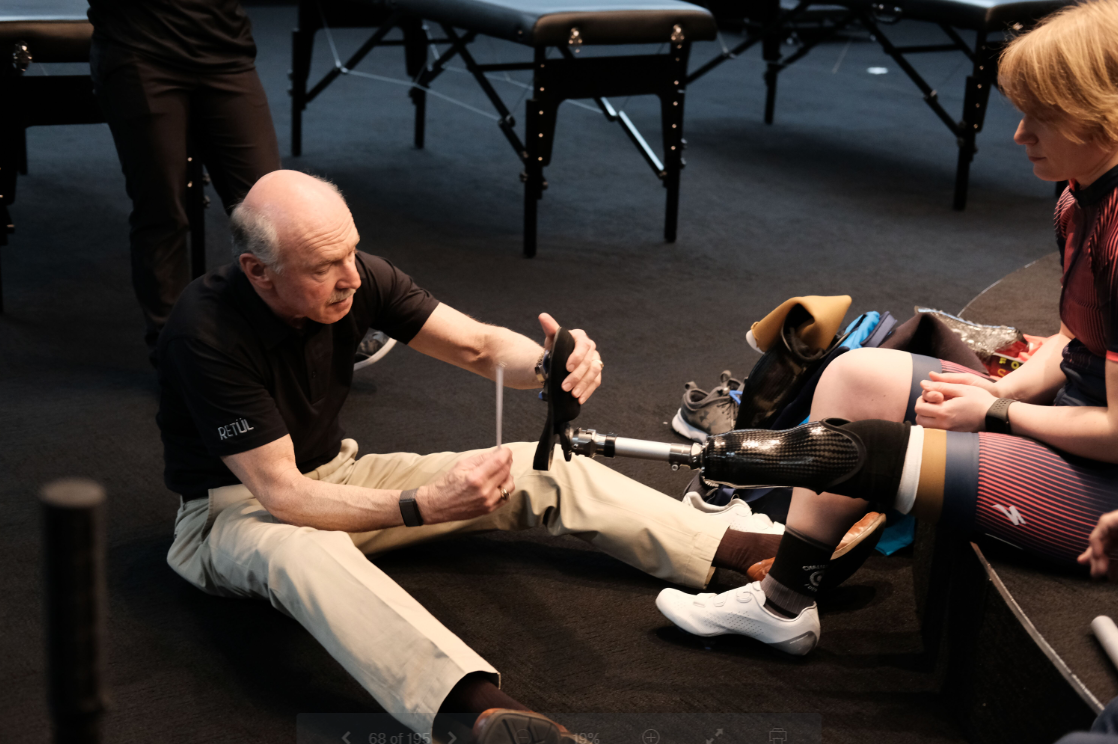This four-part series is dedicated to a great friend and leader who asked himself that very question. His decision to take a stand for disability inclusion not only altered my trajectory as an athlete, but created a ripple effect of interest and involvement by his company, Specialized Bicycle Components.
You can support more disability conversations like these by making a donation to Forrest Stump. Together, we are building a positive future for the disability community!
How do we support amputee bodies in the Retül Fit Program?
In February 2019, I was invited back to Specialized headquarters in Morgan Hill, CA to give a follow up presentation on Forrest Stump to the employees of Specialized. I shared updates on my advocacy work and clips from our documentary film, 1500 Miles.
As part of our visit, Greg also arranged something very special. He announced to the audience that Specialized had granted me a sponsorship to be fit on the fastest triathlon bike in the world, The Shiv. As a leader of the company, Greg showed their employees that Specialized supported challenged athletes and their goals.
The support didn’t stop there, however. Greg also announced I would be custom fit to my bike through the Retül Fit Program by none other than Dr. Andy Pruitt, one of the program’s forefathers, a world champion cyclist, athletic trainer, and physician assistant. In conjunction with his work at the Boulder Center for Sports Medicine, Dr. Pruitt has become known as the world’s leading expert on bike fit and cycling-related injuries. It just so happens that he is also an amputee and has used a prosthesis for the majority of his life. Needless to say, this was incredibly exciting for me!
Greg knew that having this opportunity to work with Dr. Pruitt could be life changing. It would likely be the only time I’d ever meet with a doctor who understood my needs as both an athlete, and an amputee. And it was.


To truly understand the impact of this, it’s important to understand that the disability community has often been left out of important medical fields, such as Sports Medicine. The lack of inclusion may be unintentional at first, but in our current society, where there is a critical mass of awareness, solutions, and technology, the unintentional turns to blatant dismissal of responsibility to care for every human body. Systemic, discriminatory policies are often the root cause that perpetuate this lack of inclusion. Currently, our healthcare policies support able-bodied athletes, while at the same time restrict similar medical treatments to individuals with a disability by deeming physical activity as “not medically necessary,” “a luxury,” or “too expensive.”
Within moments of meeting Dr. Pruitt, I knew this bike fitting would be about more than just a really fast bike. It was about my health, my well-being as an athlete, and having an appropriately designed prosthesis that wouldn’t cause pain.
Because the disability community is often left out, I had a lot of questions for him, from small, Where should we place the cleat on my prosthesis? – and – What is the best type of suspension to use on my prosthesis? To large, such as How do I prevent overuse of my good leg and ensure equal power? – and – What are the common injuries for amputees when it comes to cycling?
As we got to work, we started making substantial changes not only to the bike, but to my prosthesis. Fortunately, my partner, Natalie, is also a prosthetist and had her bag of tools. Dr. Pruitt’s colleague, Julie Bates, a Retül Fit Instructor, was also there to help.



Drawing from his training, as well as experience using a prosthesis, Dr. Pruitt watched me cycle on the Retül Fit bike, made adjustments based on his knowledge of bike fit and human mechanics, conferred with Julie, and then translated his thoughts to what my amputated side should be doing. As a prosthetist, Natalie then interpreted their medical lingo and made adjustments to my prosthesis. It was truly an incredible collaboration, combining the worlds of sport, prosthetics, and medicine.
And the end result was incredible! Not only did I have a bike that felt great, but I had a prosthesis that was comfortable, expertly aligned for cycling, and wouldn’t hurt me.
And that’s when a light bulb went on in my mind.

It was suddenly clear to me that the “barriers of access” amputees face are far greater than just the lack of physical technology (i.e. a running blade or a cycling prosthesis).
There is also a huge gap in specialized medical care.
Most prosthetists do not even have the specialized training or knowledge to design a prosthesis fit for cycling – or running – and most doctors and physical therapists are not trained on the unique needs and injuries an amputee may have for all types of sports.
It then occurred to me how we could make the impact of this visit go even further for the amputee community, and that was through the Retül Fit Program.


Retül Fit is a nationwide program through Specialized that works with individuals to complete a physical assessment and uses a Motion Capture System to understand your unique body, the root cause of your aches and pains, and how a proper bike fit will help you achieve your cycling goals. Because Retül already understands that “every body is different,” it seemed they were already on board to help amputees, but could perhaps use some extra help.
Forrest Stump then posed the question: How do we support amputee bodies in the Retül Fit Program?
Perhaps there could be a way to educate fitters around the country on what to expect if they work with an amputee, while at the same time, promoting to amputees who bike, that they should visit a fitter in the Retül program! Since Retül also captures data, it could be a way to better understand this community and share this knowledge with the amputee’s prosthetist, doctor, physical therapist, and overall medical community.
To read the next post in this four-part series, click “Read More” below.
Want to support these efforts or more disability conversations? Consider making a donation to Forrest Stump, or contact Nicole Ver Kuilen (nicole@forreststump.org) to learn about gift opportunities. Want to bring Nicole into your own company? Shoot her an email with an idea!

